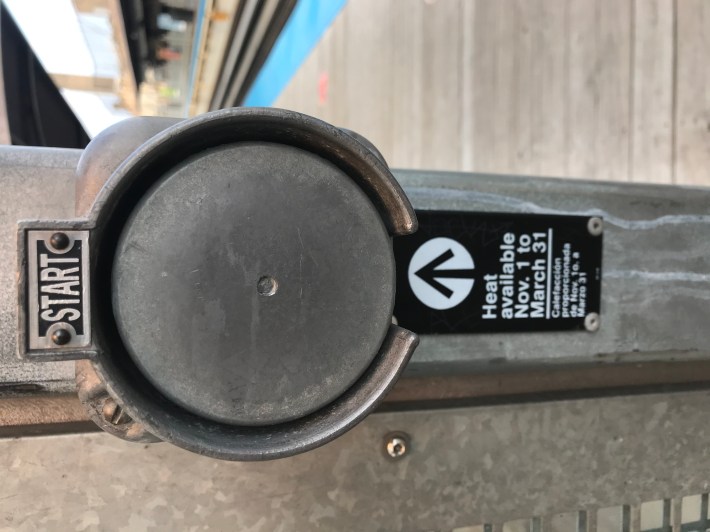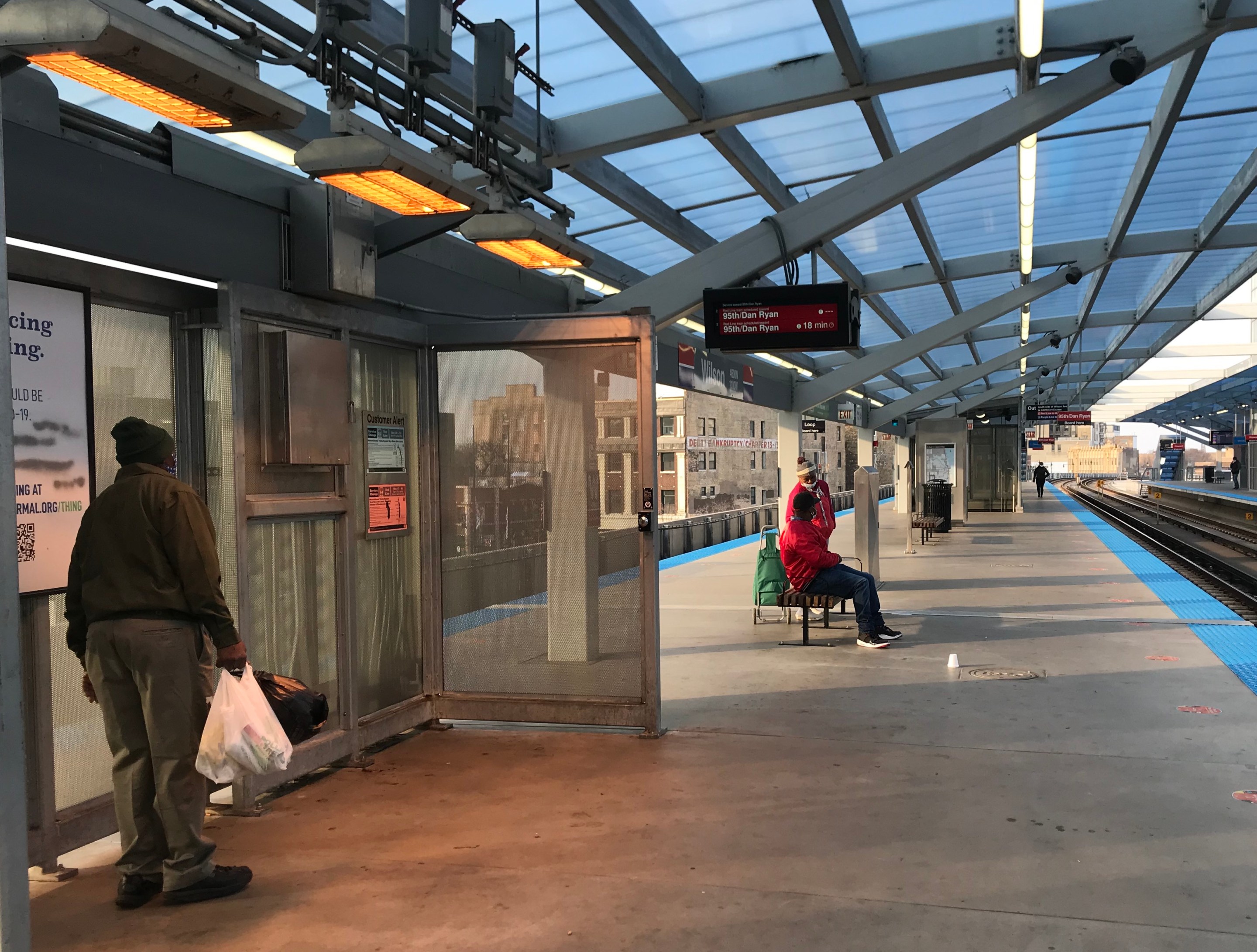Even in non-pandemic times, keeping warm while riding the CTA during the colder months can be a challenge. If you rely on buses to get around, the lack of heated shelters and sometimes unreliable nature of bus service means you may have a long wait in frigid temperatures.
Things are a little better on the 'L' system, since all 120 outdoor rail station have platform shelters with overhead heaters, activated from November 1 to March 31. The CTA says that all the heaters are inspected and tested as part of its winter preparations to make sure they're working properly.
But COVID-19 will make staying safe and comfortable on the CTA more complicated this winter. Will riders have to choose between keeping warm under the heaters or having enough space to social distance from other passengers on the platforms?
There's also the phenomenon of homeless individuals seeking shelter on transit during colder weather. Will unsafe crowding be a problem on some railcars this winter?
Streetsblog Chicago reached out to the CTA to ask how they plan to address these issues. "The CTA believes that with continued support from customers in adhering to guidance from health officials, public transit will continue to be a safe and reliable means of traveling this winter, the agency said in a statement."
The CTA isn't planning to install additional overhead heaters, which it says "require significant resources and planning to accommodate." The agency added that many station platforms may not have enough room for more heaters.

Instead of crowding into the heated shelters, the CTA suggests that where possible passengers wait for their train in the stationhouse or other enclosed spaces at the 'L' stop. The statement noted that many of the new or remodeled stations, such as the new 95th and Wilson stops, have relatively large indoor footprints that allow for waiting inside while maintaining distance from other passengers. There are typically announcements over the PA system when trains are approaching the station.
The CTA said it is also encouraging riders to dress warm, in layers that can be taken off and put on to regulate body temperature. The agency also suggests using its Rail and Bus Ridership Information Dashboard to identify times with the least amount of crowding, and using the CTA Transit Trackers to stay indoors until right before a bus or train is scheduled to arrive, to minimize your exposure to the elements. Riders can also get updates on delays via the CTA’s Twitter account along with free subscription service alerts that notify riders about planned or unplanned service impacts.
As for the issue of homeless individuals sheltering on trains, the CTA says it will continue to be “proactive in working with community partners—including the City of Chicago’s Department of Family and Support Services and its homeless outreach program, and social service agencies including Catholic Charities, Thresholds and Featherfist—to provide residents experiencing homelessness with options for shelter and care.” These agencies employ workers to regularly outreach to identify passengers continuously riding and/or who could benefit from special services.
This spring Streetsblog Chicago looked at the issue of homeless people seeking shelter on the CTA during COVID-19. Thresholds was identified as an agency providing food, water, hygiene kits, masks, shelter referrals, and safety information. This has been a hard year financially for many people, so if you do encounter apparently homeless people taking shelter on the train, maintain social distance and choose another cars if necessary to avoid unsafe crowding, but please be compassionate.
Keeping riders safe and warm during the pandemic is proving to be a challenge for other local transit agencies as well. Crowding has been an issue inside some Metra stationhouses. And last week Pace announced that it is closing indoor spaces at its Plainfield, Elgin, and Harvey Transportation Centers as a COVID precaution through January 11.






